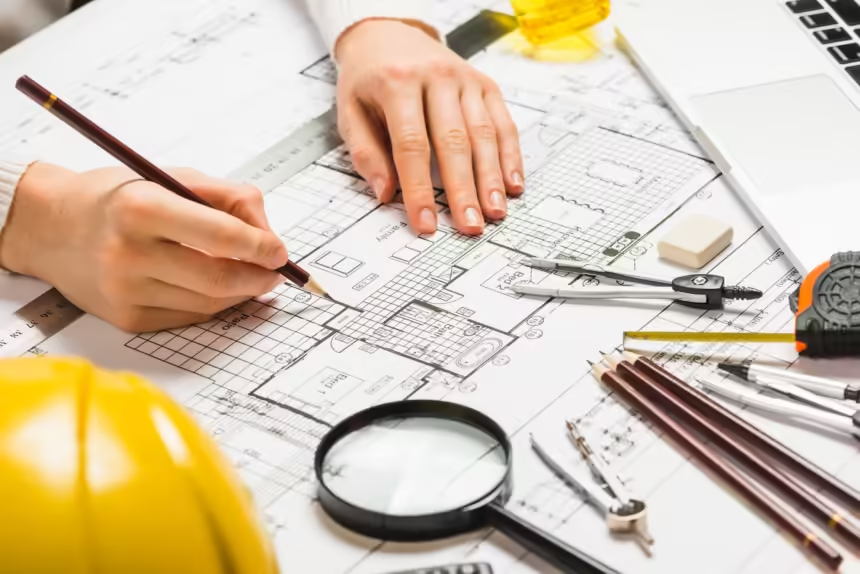Architectural design is the process of creating structures that not only serve a functional purpose but also embody aesthetic beauty and innovative creativity. It is a multidisciplinary field that combines art, science, and engineering to shape the built environment in which we live, work, and play. This article explores the key aspects of architectural design, its historical significance, contemporary trends, and the impact it has on our lives.
Historical Evolution of Architectural Design
Architecture has been an integral part of human civilization for thousands of years. From the ancient wonders of the world such as the Pyramids of Egypt and the Parthenon in Greece to the Gothic cathedrals of Europe and the modern skyscrapers of today, architectural design has evolved through different eras and styles, reflecting the cultural, social, and technological advancements of each period.
The architectural design of ancient civilizations was often characterized by grandeur, symmetry, and religious symbolism. For example, the temples of ancient Egypt were built to honor the gods and pharaohs, while the Roman amphitheaters served as gathering places for public events. In the Middle Ages, Gothic architecture introduced innovations such as pointed arches, ribbed vaults, and flying buttresses, allowing for taller and more elaborate structures like the Notre Dame Cathedral in Paris.
The Renaissance period saw a revival of classical architectural elements from ancient Greece and Rome, with architects like Brunelleschi and Palladio creating harmonious and proportionate buildings that celebrated humanism and beauty. The Industrial Revolution brought about radical changes in architectural design, as new materials such as iron and glass enabled the construction of skyscrapers, train stations, and bridges that transformed cityscapes around the world.
Principles of Architectural Design
Architectural design is guided by several fundamental principles that help architects create buildings that are functional, safe, sustainable, and aesthetically pleasing. These principles include:
Functionality
The primary purpose of a building is to fulfill the needs and activities of its users. Architectural design must take into account the functional requirements of a space, such as the layout, circulation, lighting, ventilation, and accessibility, to ensure that it serves its intended purpose effectively and efficiently.
Form
The form of a building refers to its shape, structure, and appearance. Architectural design aims to create buildings that are visually appealing, harmonious, and expressive, reflecting the cultural, historical, and contextual influences of their surroundings. The form of a building also influences its spatial qualities, proportions, and aesthetic impact on the environment.
Sustainability
With the growing concerns about climate change and environmental degradation, sustainable design has become a key consideration in architectural practice. Sustainable architecture seeks to minimize the negative impact of buildings on the environment by using energy-efficient materials, technologies, and construction methods that reduce carbon emissions, conserve resources, and promote eco-friendly practices.
Context
Architectural design is deeply influenced by the context in which a building is situated, including its site, climate, culture, and history. Contextual design seeks to create buildings that respond to the unique characteristics of their surroundings, blending in with the natural landscape, urban fabric, and social fabric of a place to create a sense of harmony and continuity.
Contemporary Trends in Architectural Design
In the 21st century, architectural design continues to evolve in response to changing social, economic, and technological trends. Some of the key contemporary trends in architectural design include:
Sustainable Architecture
As climate change becomes a pressing global issue, sustainable architecture has gained momentum as a leading design trend. Architects are incorporating green building strategies such as passive solar design, rainwater harvesting, green roofs, and solar panels to create energy-efficient and environmentally friendly buildings that reduce their carbon footprint and promote a healthy living environment.
Adaptive Reuse
With the increasing urbanization and population growth, adaptive reuse has emerged as a sustainable alternative to new construction. Architects are repurposing and renovating existing buildings such as warehouses, factories, and churches into residential lofts, offices, and cultural centers, preserving their historical and architectural value while meeting the changing needs of modern society.
Parametric Design
Advances in digital technology have revolutionized the way architects design and construct buildings. Parametric design utilizes algorithms and computer software to generate complex geometries, forms, and patterns that can be customized and optimized to enhance performance, aesthetics, and efficiency. Architects are using parametric design to create innovative structures such as biomimetic facades, kinetic installations, and interactive environments that push the boundaries of traditional architecture.
Biophilic Design
Biophilic design is a design approach that seeks to connect people with nature through the use of natural materials, colors, textures, and patterns in architectural spaces. By incorporating elements such as indoor plants, living walls, natural light, and views of the outdoors, architects are creating environments that promote health, well-being, and productivity, fostering a sense of connection and harmony between humans and the natural world.
Impact of Architectural Design on Society
Architectural design plays a crucial role in shaping the way we live, work, and interact with our built environment. Well-designed buildings can enhance the quality of life, foster social interactions, and create a sense of place and identity within communities. Architecture also influences our mental and emotional well-being, evoking feelings of joy, inspiration, and belonging through spaces that are beautiful, functional, and meaningful.
Architectural design has the power to address pressing social issues such as urbanization, housing affordability, climate change, and public health by proposing innovative solutions that promote inclusivity, sustainability, and resilience. By designing buildings that are accessible, flexible, and responsive to the needs of diverse populations, architects can contribute to a more equitable and sustainable future for all.
In conclusion, architectural design is a dynamic and multifaceted discipline that combines art, science, and technology to create buildings that inspire, innovate, and endure. By integrating principles of functionality, form, sustainability, and context, architects can design spaces that enrich our lives, elevate our spirits, and shape the world we inhabit. As we continue to explore new possibilities and embrace emerging trends in architectural design, we have the opportunity to create a more harmonious, resilient, and sustainable built environment for generations to come.




